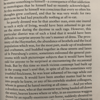Podcast
Questions and Answers
What is the general meaning of the term 'cell'?
What is the general meaning of the term 'cell'?
- Small particle of matter
- Small chamber-like structure
- Small living organism
- Small room, a hut (correct)
Who introduced the term 'nucleus' in 1833?
Who introduced the term 'nucleus' in 1833?
- Schwann
- Schleiden
- Leeuwenhoek
- R.Brown (correct)
What is the smallest unit of protoplasm capable of independent existence?
What is the smallest unit of protoplasm capable of independent existence?
- Cytoplasm
- Nuclear region
- Protoplasm
- Cell (correct)
What is the term for the living substance of plants and animals?
What is the term for the living substance of plants and animals?
Who made the first microscopic observations of protozoa, bacteria, and sperm?
Who made the first microscopic observations of protozoa, bacteria, and sperm?
What is the term for the fluid located between and around cells?
What is the term for the fluid located between and around cells?
What is the main benefit of using cell-free systems in molecular biology?
What is the main benefit of using cell-free systems in molecular biology?
What is the function of centrifugation at high speeds (100 000 x g for 30 mins) in cell fractionation?
What is the function of centrifugation at high speeds (100 000 x g for 30 mins) in cell fractionation?
Who isolated myofibrils from skeletal muscle cells that contract upon the addition of ATP in 1949?
Who isolated myofibrils from skeletal muscle cells that contract upon the addition of ATP in 1949?
What is the function of centrifugation at very high speeds (300 000 x g for 3hrs) in cell fractionation?
What is the function of centrifugation at very high speeds (300 000 x g for 3hrs) in cell fractionation?
What is the definition of cells in the context of medical biology?
What is the definition of cells in the context of medical biology?
What are the components of mammalian tissue?
What are the components of mammalian tissue?
In what year was the first cell-free system to carry out protein synthesis (in vitro translation) developed?
In what year was the first cell-free system to carry out protein synthesis (in vitro translation) developed?
What is the function of intercellular or extracellular substances in mammalian tissue?
What is the function of intercellular or extracellular substances in mammalian tissue?
What is the main application of microdissection techniques in cell culture?
What is the main application of microdissection techniques in cell culture?
What type of cells can give rise to all cell types in the body?
What type of cells can give rise to all cell types in the body?
What is the primary use of hybrid cells?
What is the primary use of hybrid cells?
Which of the following is an application of cell culture?
Which of the following is an application of cell culture?
What is the result of cell fusion?
What is the result of cell fusion?
What is the significance of embryonic stem cells?
What is the significance of embryonic stem cells?
Which organism is considered the most frequently used single cell eukaryote?
Which organism is considered the most frequently used single cell eukaryote?
What is the primary advantage of using Escherichia coli in research?
What is the primary advantage of using Escherichia coli in research?
What is the primary use of microdissection techniques in cell culture?
What is the primary use of microdissection techniques in cell culture?
What is the significance of embryonic stem cells?
What is the significance of embryonic stem cells?
What is the result of cell fusion?
What is the result of cell fusion?
Which of the following organisms is the most well understood in biology?
Which of the following organisms is the most well understood in biology?
What is the primary application of cell culture?
What is the primary application of cell culture?
Which of the following is an application of hybrid cells?
Which of the following is an application of hybrid cells?
What is the significance of Saccharomyces cerevisiae (yeast) in biology?
What is the significance of Saccharomyces cerevisiae (yeast) in biology?
What is the benefit of using embryonic stem cells in medical research?
What is the benefit of using embryonic stem cells in medical research?
What is the size of a typical animal cell?
What is the size of a typical animal cell?
What is the oldest technique for examining living cells?
What is the oldest technique for examining living cells?
Who developed the first tissue culture in 1907?
Who developed the first tissue culture in 1907?
What is the purpose of culturing cells in solutions?
What is the purpose of culturing cells in solutions?
What is the classical culture media used in cell culture?
What is the classical culture media used in cell culture?
What is the benefit of using cell culture?
What is the benefit of using cell culture?
What is the result of culturing fragments of spinal cord in lymphatic fluid?
What is the result of culturing fragments of spinal cord in lymphatic fluid?
What is the purpose of using embryo juice in cell culture?
What is the purpose of using embryo juice in cell culture?
What is the primary purpose of a laminar-flow hood in a cell culture laboratory?
What is the primary purpose of a laminar-flow hood in a cell culture laboratory?
What is the significance of pH 7.4 in cell culture?
What is the significance of pH 7.4 in cell culture?
What is the main advantage of using cell culture?
What is the main advantage of using cell culture?
What is a characteristic of primary cell cultures?
What is a characteristic of primary cell cultures?
What is a characteristic of cell lines?
What is a characteristic of cell lines?
What is the purpose of using growth factors in cell culture?
What is the purpose of using growth factors in cell culture?
What is the significance of anchorage-dependent cells in cell culture?
What is the significance of anchorage-dependent cells in cell culture?
What is the purpose of using a CO2 incubator in cell culture?
What is the purpose of using a CO2 incubator in cell culture?
What is the purpose of cell fractionation?
What is the purpose of cell fractionation?
How are cells disrupted in cell fractionation?
How are cells disrupted in cell fractionation?
What is the result of carefully applying disruption procedures in cell fractionation?
What is the result of carefully applying disruption procedures in cell fractionation?
What is the suspension of cells called after disruption?
What is the suspension of cells called after disruption?
What is cell fractionation?
What is cell fractionation?
What are the methods used in cell fractionation?
What are the methods used in cell fractionation?
What is the purpose of differential centrifugation in cell fractionation?
What is the purpose of differential centrifugation in cell fractionation?
What is the final step in cell fractionation?
What is the final step in cell fractionation?
What is the purpose of using low-speed centrifugation in cell fractionation?
What is the purpose of using low-speed centrifugation in cell fractionation?
What is the result of homogenization in cell fractionation?
What is the result of homogenization in cell fractionation?
What is the purpose of using filters in cell fractionation?
What is the purpose of using filters in cell fractionation?
What is the purpose of using a cold isotonic buffer in cell fractionation?
What is the purpose of using a cold isotonic buffer in cell fractionation?
What is the purpose of using high-speed centrifugation in cell fractionation?
What is the purpose of using high-speed centrifugation in cell fractionation?
What is the result of differential centrifugation?
What is the result of differential centrifugation?
What is the purpose of using ultracentrifugation in cell fractionation?
What is the purpose of using ultracentrifugation in cell fractionation?
What is the result of grinding tissue in a blender in cell fractionation?
What is the result of grinding tissue in a blender in cell fractionation?
What is the main purpose of centrifugation in cell fractionation?
What is the main purpose of centrifugation in cell fractionation?
What is the term for the process of moving components in a mixture through a salt solution at different rates during centrifugation?
What is the term for the process of moving components in a mixture through a salt solution at different rates during centrifugation?
What is used to protect the bands from convective mixing during centrifugation?
What is used to protect the bands from convective mixing during centrifugation?
What type of instrument is used to achieve a finer degree of separation during centrifugation?
What type of instrument is used to achieve a finer degree of separation during centrifugation?
What is the purpose of layering the homogenate as an arrow band on top of a dilute salt solution during centrifugation?
What is the purpose of layering the homogenate as an arrow band on top of a dilute salt solution during centrifugation?
What is the method of disrupting cells that uses enzymes such as lysozyme and chitinase?
What is the method of disrupting cells that uses enzymes such as lysozyme and chitinase?
Study Notes
Cell Biology
- Cells are the basic morphological and functional units of the body, and are too small to be seen with the naked eye.
- Development of cell biology had to await the development of a magnifying device, such as the light microscope.
- The term "Cellula" was first used by Robert Hook in 1665 to describe small chamber-like structures observed in cork under a microscope.
Cell Components
- Protoplasm is the living substance of plants and animals, comprising the nuclear region and cytoplasm.
- The smallest unit of protoplasm capable of independent existence is the cell.
Cell Theory
- Cells are the fundamental units of both structure and function in all living organisms.
- All living organisms are composed of cells and their products.
- Cells arise only from preexisting cells.
Cell Culture and Applications
- Microdissection techniques allow selected cells to be isolated from tissue slices.
- Applications of cell culture include:
- Embryonic organs can be cultured.
- Study of cancer cells.
- Cell to virus relations.
- Cytogenetic research.
- Cell-cell interactions.
- Cell nutrition.
Stem Cells
- Embryonic stem cells are the most promising cell lines from a medical point of view.
- These cells can proliferate indefinitely and give rise to all cell types in the body.
- ES cells might be used to replace and repair damaged mature human tissues.
Model Organisms
- Escherichia coli is the best understood cell in biology.
- Saccharomyces cerevisiae (yeast) is the most frequently used single cell eukaryote.
- Studies with bacteria and yeast established the basic principles of molecular biology.
Cell Fusion
- Cell fusion is the process of membrane merging and cytoplasmic mixing of two cell types.
- Hybrid cells are produced by fusion of animal cells.
- Examples include human cell and mouse cell fusion.
Microdissection Techniques
- Allow selected cells to be isolated from tissue slices
- Applications include:
- Embryonic organ culture
- Study of cancer cells
- Cell-virus relations
- Cytogenetic research
- Cell-cell interactions
- Cell nutrition
Embryonic Stem Cells
- Most promising cell lines for medical applications
- Derived from inner cell mass of early mouse embryos
- Can proliferate indefinitely
- Can give rise to all cell types in the body
- Can be used to replace and repair damaged mature human tissues
- Potential therapeutic applications:
- Muscular dystrophy
- Parkinson's disease
- Type I diabetes
Model Organisms
- Escherichia coli (E. coli): best understood cell in biology
- Saccharomyces cerevisiae (yeast): most frequently used single-cell eukaryote
- Studies with bacteria and yeast established basic principles of molecular biology
Cell-Cell Fusion
- Hybrid cells produced by fusion of animal cells
- Cell fusion: membrane merging and cytoplasmic mixing of two cell types
- Examples: human cell and mouse cell fusion
Cell Size and Number
- Human body composed of trillions of cells
- Size of a typical animal cell: 20-30 µm
- Largest cell: human egg (150-200 µm)
- Smallest cell: granular cells of cerebellum (4-5 µm)
Methods for Examining Cells
- Examination of the cell as a whole (without disruption)
- Examination of living cells (fresh tissues)
- Examination of killed and preserved tissues and cells
- Fractionation of cells and analyzing their molecules
Cell Culture
- Isolating cells and growing them in culture
- Living cells can be suspended in an appropriate liquid (e.g. saline solution)
- Prolonged study of living cells can be made by culturing them in solutions containing necessary nutrients
- First tissue culture (1907): Ross Harrison, isolated fragments of spinal cord of a frog
Culture Conditions
- Medium supplying essential nutrients (amino acids, carbohydrates, vitamins, minerals)
- Growth factors
- Hormones
- Gases (O2, CO2)
- Regulated physico-chemical environment (pH, osmotic pressure, temperature)
- Most cells are anchorage-dependent and require a solid or semi-solid substrate
Primary Cell Culture and Cell Lines
- Primary cell culture: derived from normal animal cells, limited life span, divide 25-50 times, and then stop dividing (cell senescence)
- Cell lines: eukaryotic cell lines, widely used for experiments, transformed cells, grow indefinitely in culture (immortal cells)
Fractionation of Cells and Analyzing their Molecules
- Cell fractionation is a method to study certain organelles from a cell, involving the disruption of cells and isolation of organelles and macromolecules in pure form.
- Cells can be disrupted in various ways, such as osmotic shock, ultrasonic vibration, or grinding up.
Cell Disruption Methods
- Chemical: alkali, organic solvents, detergents
- Enzymatic: lysozyme, chitinase
- Physical: osmotic shock, freeze/thaw
- Mechanical: sonication, homogenization, French press
Steps of Subcellular Fractionation
- Homogenization
- Differential centrifugation
- Further separation and purification by density gradient centrifugation
- Collection of fractions
- Analysis of fractions
Centrifugation
- Centrifugation is the first step in most fractionations, separating components that differ greatly in size.
- Low speed centrifugation is used to separate intact cells from medium.
- High speed centrifugation can be used to separate subcellular components.
- When a centrifugal force is applied to an aqueous mixture, components of larger size and density will sediment faster.
Density Gradient Centrifugation
- A finer degree of separation can be achieved by layering the homogenate as an arrow band on top of a dilute salt solution that fills a centrifuge tube.
- The various components in the mixture move as a series of distinct bands through the salt solution, each at a different rate, in a process called velocity sedimentation.
History of Mitochondria Isolation
- 1934: First isolation of mitochondria from liver by Bensley
- 1937: First chemical analysis of mitochondria
Isolation of Components of Living Cells by Differential Centrifugation
- Organelles and macromolecules can be separated by ultracentrifugation.
- Pure fractions of nucleus, nucleolus, mitochondria, lysosomes, microsomes, and ribosomes can be isolated.
- This method has made it possible to obtain knowledge on the molecular composition of cell components.
Method of Differential Centrifugation
- Cut tissue in an ice-cold isotonic buffer to stop enzyme reactions, osmosis, and pH changes.
- Grind tissue in a blender to break open cells.
- Filter to remove insoluble tissue.
- Centrifuge filtrate at low speeds (1000 X g for 10mins) to pellet nuclei.
- Centrifuge at medium speeds (10 000 x g for 30 mins) to pellet mitochondria.
Studying That Suits You
Use AI to generate personalized quizzes and flashcards to suit your learning preferences.
Related Documents
Description
This quiz covers the principles of centrifugation in cell biology, including the separation of cellular components and the study of cell-free systems. It also touches on the history of cell-free systems and their role in understanding cellular processes.





